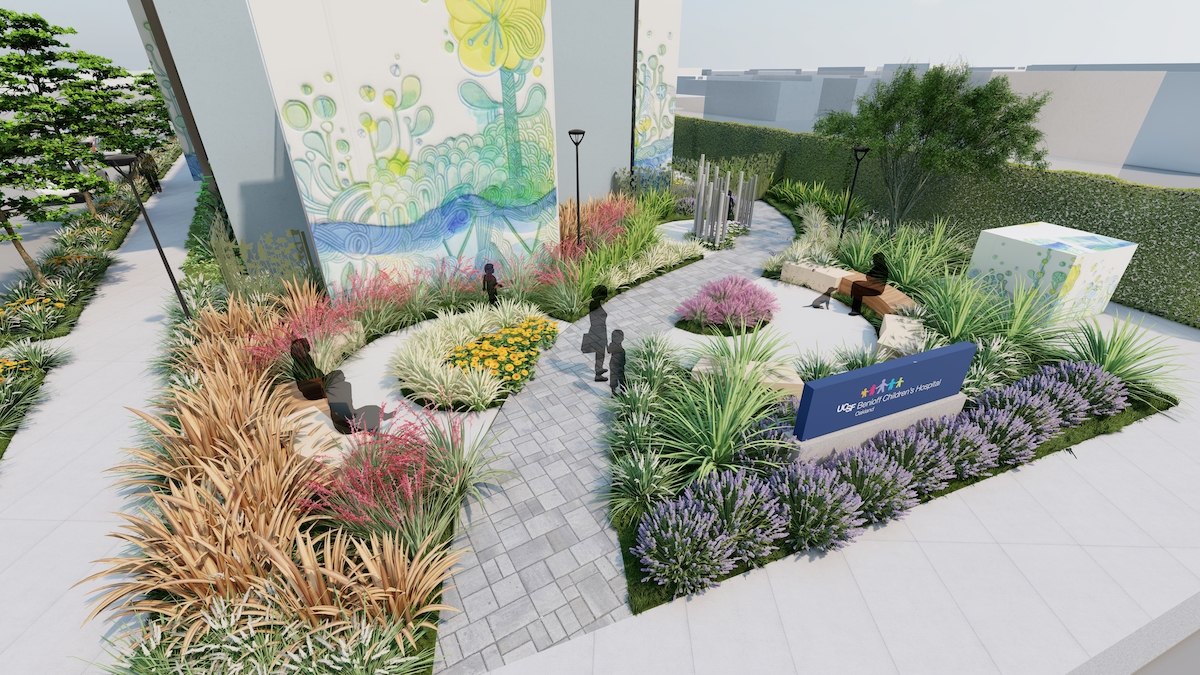In today’s healthcare landscape, the optimal medical office goes beyond a surface-level focus on wellness to intentionally supporting emotional well-being and the whole patient. The current mental health crisis impacting patients has influenced the kind of care our communities are seeking out, while exasperating the burden on the medical staff supporting them.
Medical spaces need to be thoughtful of everyone who enters the doors, from the patients and their families to the practitioners and staff who serve them. Truly supporting this community requires that medical offices simultaneously make people feel welcome, reduce anxiety, and engender empathy.
To do this, there are five critical categories to prioritize during the design phase of new and remodeled medical offices: privacy, separate areas for practitioners, natural light, outdoor spaces, and thoughtful selection of materials.
1. DESIGN FOR PATIENT PRIVACY
Every patient is entitled to privacy, but not everyone is comfortable coming into the office to get the support they need. Medical offices can dramatically improve the comfort level of this highly sensitive patient population by creating opportunities for more discretion from the moment they arrive until they leave.
This could begin with a separate entrance from the front door – like a secondary entry with dedicated welcome staff for specific patient populations. Once they are inside these patients can still be intimidated by activity at the front desk and waiting room.
Are you a healthcare design or construction professional? If so, we invite you to take BD+C's 2024 Outpatient Facilities survey.
The waiting room experience can be improved by allowing more distance between groupings of chairs to provide a buffer between patients. High-back lounges that provide a level of visual screening can also help. Carving out distinct areas for children and families, settings suited for quiet conversation, and alcoves with acoustic privacy for quiet reflection can also enhance a feeling of privacy.
Acoustic consultants can be valuable partners in the design of clinical spaces at the front end of the project, but it’s critical to bring them in at the end of construction as well to test the spaces and make any adjustments to meet your standards.
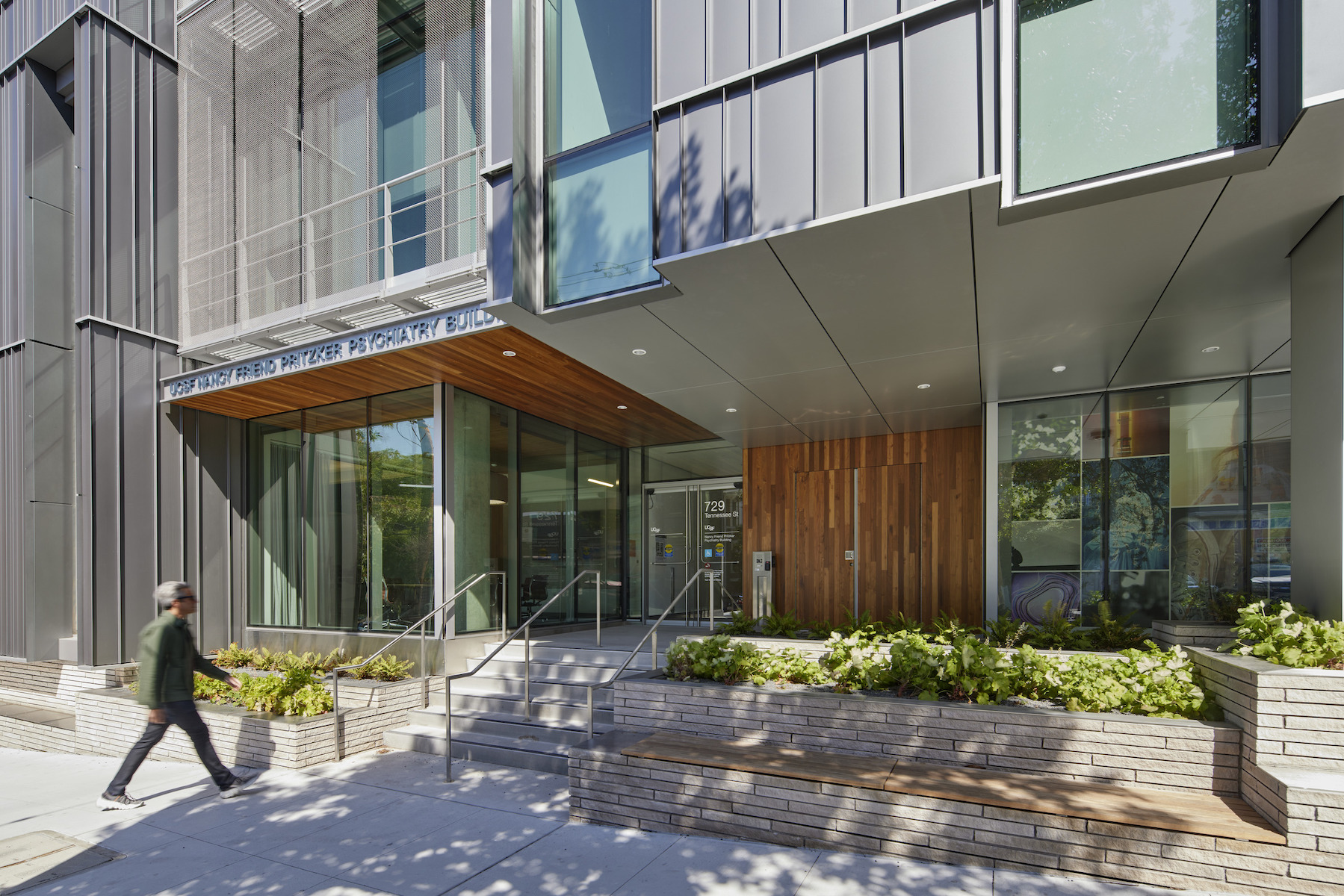
2. PROVIDE EXCLUSIVE AREAS FOR PRACTITIONERS
Empathy is what fosters human connection. A health practitioner’s empathy impacts the patient experience, which can positively affect their ability and willingness to comply with treatment. But a health worker’s job is not easy. In a 2022 advisory, Surgeon General Vivek Murthy noted that “8 of 10 health workers have experienced workplace violence, 76% of health workers reported exhaustion and burnout, and 66% of nurses have considered resigning.”
This level of stress can significantly reduce health workers’ capacity for empathy. To help restore empathy, practitioners need to practice self-care and self-empathy. Healthcare architects should carve out a separate space exclusively for physicians, nurses, and allied health professional, where they can socialize and eat a meal or snack – but most importantly it’s where they can go to wind down, collect themselves, and recover so that they can carry out their work with clarity of mind and provide the best possible care for their patients.
This could be an indoor space, an outdoor balcony, or a garden area; however, it must be a restricted badge-access area separate from patients, ideally with a visual disconnect from clinical spaces.
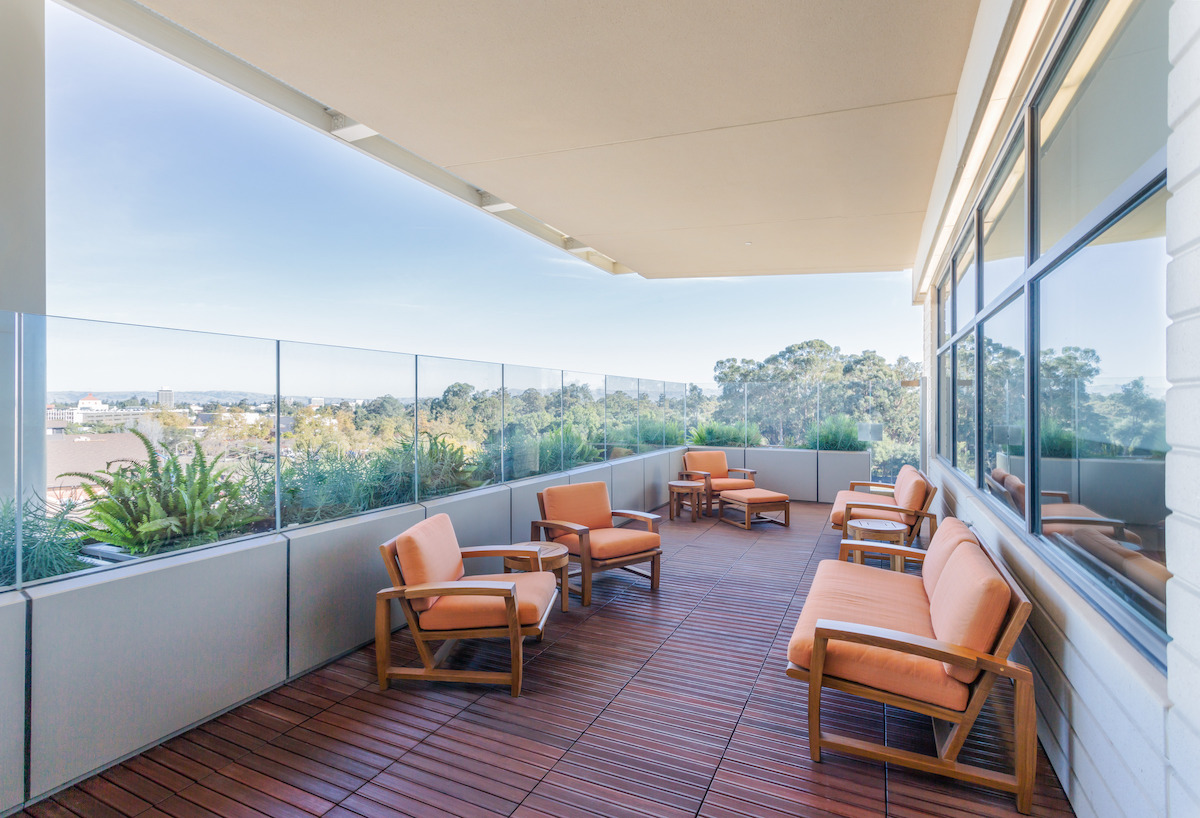
3. HARVEST THE BENEFITS OF NATURAL LIGHT
Daylit windows in the workplace have a dramatic impact on workers’ quality and duration of sleep, amount of physical activity, and overall quality of life. Exposure to sunlight can also help people with anxiety and depression, especially in combination with other treatments.
Daylight should be seen as a must-have for almost every room – including exam rooms. Grand windows and views could be an easy solution for your location, but not every office has access to desirable vistas and the need to balance transparency with privacy can prove limiting. Landscape features can be used to screen views into the building while providing biophilic benefits to those inside.
Clerestory windows, adjustable window coverings, and frosted glass can address the privacy issue. When windows are not an option, skylights and solartubes can bring natural light into the trickiest of spaces. If all else fails, daylight-mimicking luminaires on a 24/7 circadian schedule can be employed.
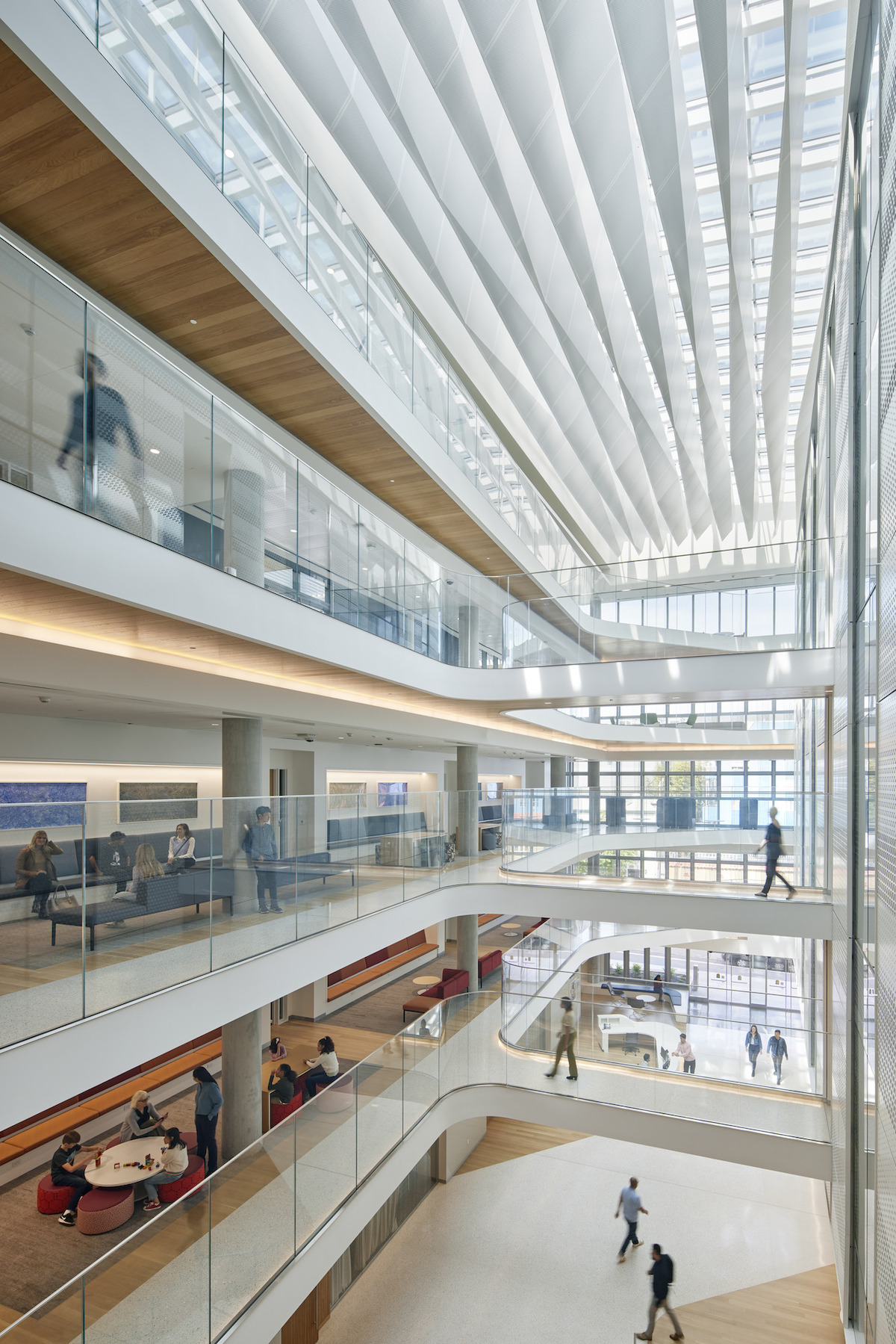
4. CREATE REFRESHING OUTDOOR SPACES
The only thing better than natural light indoors is being in the sunlight outdoors. Sunlight is a direct source of Vitamin D and when it hits our skin, it causes our bodies to release nitric oxide into the blood, which lowers blood pressure and helps people relax.
A garden area can serve as a place of respite for patients and staff to step away from the clinical environment, but it can also prove valuable to the waiting families of patients. Siblings and young children need to move around. This change of scenery would be greatly appreciated by the young ones, parents, and other visitors. Beyond these uses, a well-designed landscape can be therapeutic. This could be a passive landscape to stroll, get some fresh air, or meditate, or one specifically designed for outdoor therapy.

The spaces outside the office should be seen as an extension of the building and should be considered in early programming as vital and distinct spaces. If no outdoor space exists consider creating one using parking lots, balconies, decks, or even the rooftop. The natural elements in these spaces can help divide up the uses and create visual interest for those inside as well. Maximizing every opportunity in the landscape can dramatically increase your usable square footage or, at the very least, provide a well-loved amenity.
5. SELECT MATERIALS TO ENHANCE WELLNESS
The standards for cleanliness in healthcare settings are very high. Add to this an interest in meeting sustainability and wellness standards, and there are relatively few remaining options available for interior finishes.
This is especially difficult when the goal is to create a space that feels welcoming and relaxing. Here, a creative eye toward design is paramount. Look to hotels and restaurants for cues in creating a warm and welcoming space. While lush potted plants aren’t appropriate for a medical office, biophilia can bring in elements of nature through patterns and references. If outdoor views aren’t available, graphic images can connote or directly convey nature or natural settings.
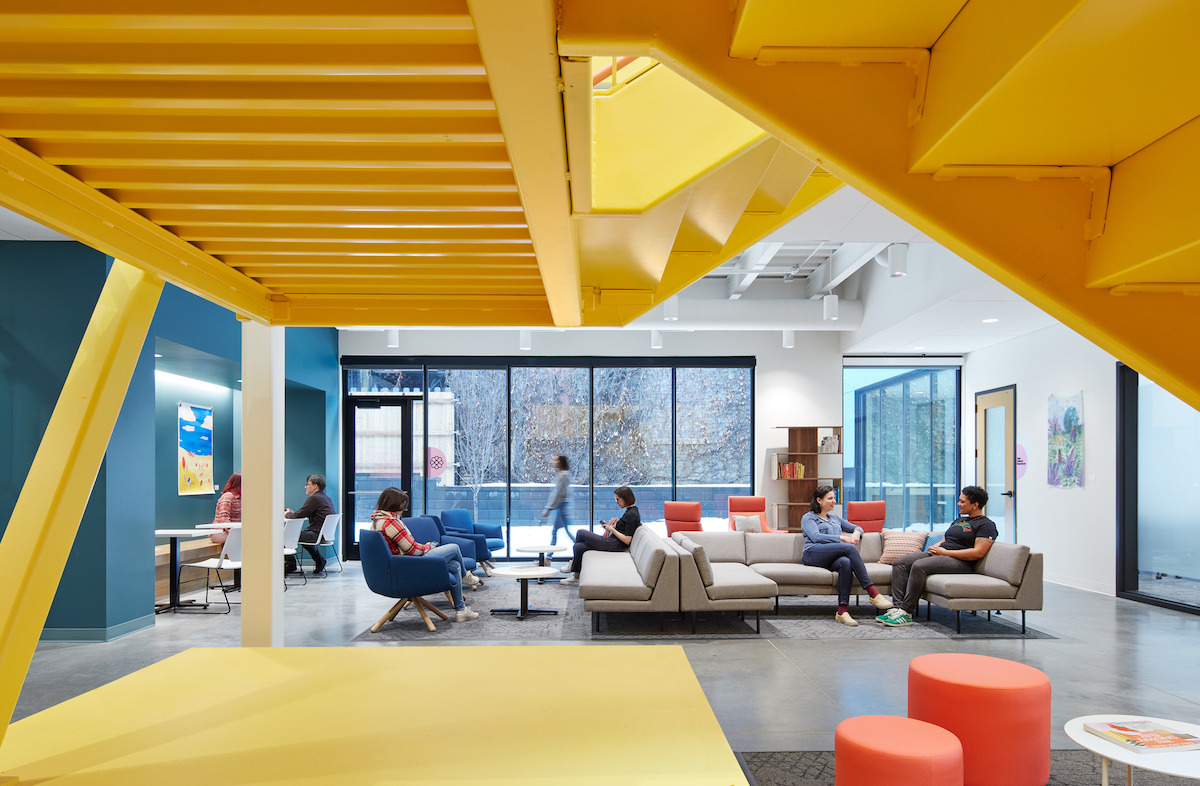
DESIGN WITH EMPATHY AT THE CORE
Prioritizing these five elements can take the physical form of medical offices beyond the sterile and functional requirements to create welcoming spaces that serve patients, their families, and the people who work there. These strategies for hospitality-like settings that build in more privacy, maximize natural daylight, and provide access to the outdoors help people relax, alleviate anxiety, and support better moods for everyone.
This is a respectful approach for patients, their family members, and staff, all of whom may be carrying a heavy mental load. Empathy is the core of any wellness program, so creating an area exclusively for doctors and nurses to help them regenerate their capacity to feel for their patients is essential.
Collectively these five approaches can create a space that fosters connection and supports well-being and wellness.
ABOUT THE AUTHOR
Megan Koehler, AIA, LEED AP BD+C, is an Associate Principal at Perkins&Will, leading the healthcare practice in the San Francisco studio. A registered architect in California and Illinois, she is a founding member of the Bay Area Living Building Challenge Collaborative.
Related Stories
| Aug 11, 2010
America's Greenest Hospital
Hospitals are energy gluttons. With 24/7/365 operating schedules and stringent requirements for air quality in ORs and other clinical areas, an acute-care hospital will gobble up about twice the energy per square foot of, say, a commercial office building. It is an achievement worth noting, therefore, when a major hospital achieves LEED Platinum status, especially when that hospital attains 14 ...
| Aug 11, 2010
Hospital Additions + Renovations: 14 Lessons from Expert Building Teams
Two additions to a community hospital in Ohio that will double its square footage. A 12-story addition on top of an existing 12-story tower at Houston's M.D. Anderson Cancer Center. A $54 million renovation and addition at the University of Virginia Medical Center. A 67-bed, $70 million addition/renovation to a community hospital that is only five years old.
| Aug 11, 2010
Research Facility Breaks the Mold
In the market for state-of-the-art biomedical research space in Boston's Longwood Medical Area? Good news: there are still two floors available in the Center for Life Science | Boston, a multi-tenant, speculative high-rise research building designed by Tsoi/Kobus & Associates, Boston, and developed by Lyme Properties, Hanover, N.
| Aug 11, 2010
3 Hospitals, 3 Building Teams, 1 Mission: Optimum Sustainability
It's big news in any city when a new billion-dollar hospital is announced. Imagine what it must be like to have not one, not two, but three such blockbusters in the works, each of them tracking LEED-NC Gold certification from the U.S. Green Building Council. That's the case in San Francisco, where three new billion-dollar-plus healthcare facilities are in various stages of design and constructi...
| Aug 11, 2010
Holyoke Health Center
The team behind the new Holyoke (Mass.) Health Center was aiming for more than the renovation of a single building—they were hoping to revive an entire community. Holyoke's central business district was built in the 19th century as part of a planned industrial town, but over the years it had fallen into disrepair.
| Aug 11, 2010
Right-Sizing Healthcare
Over the past 30 years or so, the healthcare industry has quietly super-sized its healthcare facilities. Since 1980, ORs have bulked up in size by 53%, acute-care patient rooms by 77%. The slow creep went unlabeled until recently, when consultant H. Scot Latimer applied the super-sizing moniker to hospitals, inpatient rooms, operating rooms, and other treatment and administrative spaces.
| Aug 11, 2010
Great Solutions: Healthcare
11. Operating Room-Integrated MRI will Help Neurosurgeons Get it Right the First Time A major limitation of traditional brain cancer surgery is the lack of scanning capability in the operating room. Neurosurgeons do their best to visually identify and remove the cancerous tissue, but only an MRI scan will confirm if the operation was a complete success or not.


